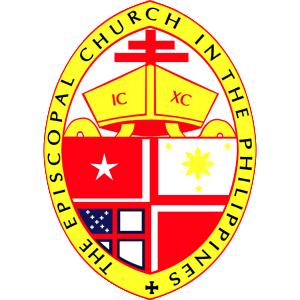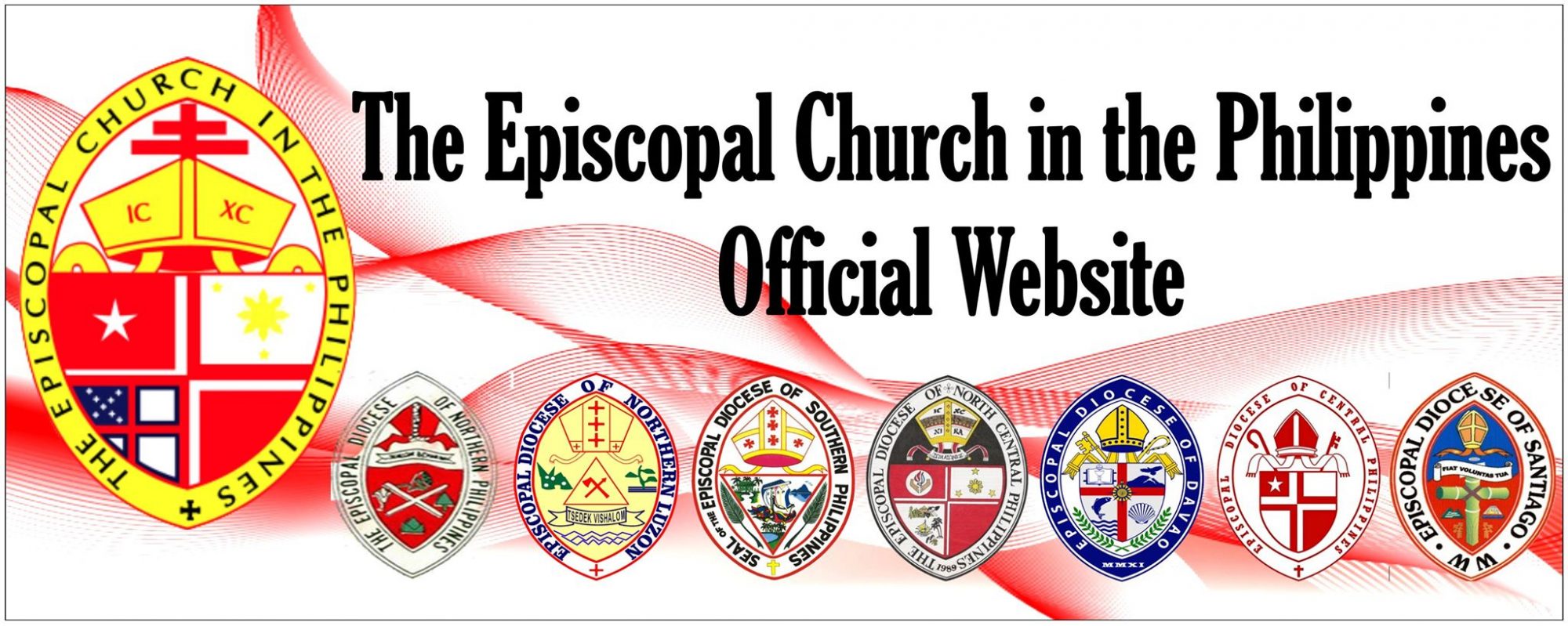
table of contents
Brief History
The 18th Diocesan Convention of the Episcopal Diocese of Northern Philippines held on March 2, 1989 passed Resolution No. 12 giving priority to the development of the original Southeastern Deanery and Pacific Coast Deanery toward the formation of these two deaneries as a separate diocese “in the near future.”
The 23rd Diocesan Convention held on April 27, 1994 passed Resolution No. 1 mandating Diocesan Council to form a committee to “study the feasibility and mechanics of the division of the Diocese…”
On April 15, 1999: The 28th Diocesan Convention approved Resolution No. 11 to create a new diocese by dividing the Episcopal Diocese of Northern Philippines toward “accelerating mission expansion and congregational development.” The areas covered by the new diocese include: Ifugao,Nueva Viscaya Deanery, EMPROV Deanery, Greenfields Deanery, Cornfields Deanery, Pacific Coast Deanery and Bonsai Deanery.
The Provincial Synod of the Episcopal Church in the Philippines held May 4-8, 1999 authorized the creation of a new diocese by dividing the Diocese of Northern Philippines and the election of a bishop. In December of the same year: A two-hectare lot in Divisoria, Santiago City, was purchased for the location of the Diocesan Center for the new diocese.
On May 2-5, 2000: The Diocese of Northern Philippines held its last convention in Kin-iway, Besao as an undivided diocese. Working Committees were appointed to prepare for the Primary Convention of the New Diocese. Initial staff positions for the new diocese were designated as follows: Finance Officer, Development Officer, Cashier, Community Development worker and GAD Program Assistant. Infrastructure development on the diocesan lot in Divisoria, Santiago started. Staff moved to newly finished staff houses cum office at the end of October.
The Primary Convention of the New Diocese was held on November 7-10, 2000. Highlights of the Primary Convention are: adoption of “Episcopal Diocese of Santiago” as the official name of the new diocese; election of the Rev. Alexander A. Wandag, Sr. as first bishop; ratification of its Constitution and Canons; organization of the Standing Committee, Diocesan Council and other diocesan committees. The Diocesan Standing Committee started the process towards the consecration of the Bishop-Elect by issuing notices to the Standing Committees of other dioceses for their consent to the consecration and installation of the Bishop-Elect.
Prime Bishop Ignacio C. Soliba took over as bishop-in-charge of the new diocese on December 13, 2000. The bishop-in-charge appointed the Rev. Alfonso Camiwet as Vicar General and Mr. Patrick Pelenia as office administrator pending the consecration and installation of the Bishop Elect.
The Testimonials of consent to the consecration and installation of the Bishop Elect submitted by majority of the Standing Committees and bishops of the different dioceses of the Episcopal Church in the Philippines were all submitted in February 2001.
In March 2000: The Prime Bishop issued the order for the consecration, ordination and installation of Bishop-elect Alexander Arsay Wandag, Sr. as first bishop of the Episcopal Diocese of Santiago.
March 21, 2001: Blessing of the Diocesan site and structures at Divisoria, Santiago City, Isabela.
The Most Rev. Ignacio C. Soliba together with the other bishops of both ECP and IFI, consecrated, ordained and installed Bishop-Elect Alexander Arsay Wandag, Sr. as first bishop of the Diocese of Santiago on the feast of St. Mark the Evangelist, last April 25, 2001, at the diocesan center in Divisoria, Santiago City, Isabela.
Vision
We envision the Episcopal Diocese of Santiago with a dynamic leadership and committed members working together to support, sustain, and expand God’s mission and ministry.
Mission
To proclaim in word and in deed the Good News in Jesus Christ in the power of the Holy Spirit that His people in this diocese may have fullness of life, reconciliation and redemption.
Of the Seal of the Diocese

The diocesan seal is in the form of the lethus or fish, which is one of the symbols used by early Christians to identify one another during the period in history when Christians were being persecuted for their faith.
The name of the diocese is inscribed around the seal, “Episcopal Diocese of Santiago.” “Santiago” is the name of the city where the Diocesan Center is located. More significant is that Santiago is the Spanish name for St. James the Apostle who became the first among the twelve to suffer martyrdom for the sake of Jesus Christ.
The bishop’s miter at the top signifies the Episcopal authority of the chief pastor of the portion of Christ’s flock.
Below the miter is the diocesan motto: Fiat Voluntas Tua which is the Latin for “Let thy will be done.” This is taken from the Lord’s prayer expressing total obedience to the mission for which He was sent by the Father. This shall remind the diocesan leadership and constituents never to lose sight of the Church’s mission: to do God’s will, and not anybody else’s will.
The cross is the pre-eminent symbol of humanity’s redemption from sin through the sacrifice of Christ’s own life. It teaches personal dedication to the Redeemer who called His followers to take up the cross. The cross is made of bamboo, a local plant that can withstand the severest drought and the strongest typhoon, and therefore, represents resiliency in the face of adversities that Christians confront in their daily lives.
The geographic characteristics of the new diocese are symbolized by the mountains with terraces, rice, and fish on a net over blue waters. The rugged mountains represent the Cordillera ranges to the west, the Curaballo mountains to the south and the Sierra Madre mountains in the east. The rice, heavy with grains, represents the main staple that is produced in the rice terraces of the Cordillera Central and the vast fields of the southern Cagayan Valley. The fish and the net represents a major resource and means of livelihood for the people on the coastal areas of Aurora and Isabela along the Pacific Ocean.
Finally, the ‘MM’ in Roman numerals at the bottom of the seal represent the millennium year 2000 when the diocese was established.
Bishop

Address
Maharlika Highway, 331 Divisoria, Santiago City, Isabela
Telefax # (078) 682-1256
Admin Office: 6621561
Email address: charamateds@yahoo.com
For live streaming services and inspiring stories, check out their Facebook group https://www.facebook.com/groups/465462116818564/
Congregations
To show/hide the tables, just click on the sections underneath.
Full Fledged Parishes
| Full Fledged Parishes | Address |
|---|---|
| ST PHILIP & ST JAMES PARISH EPISCOPAL CHURCH | MUCDOL, DIPACULAO, AURORA PROVINCE |
| ST STEPHEN PARISH EPISCOPAL CHURCH | RESERVA, BALER, AURORA PROVINCE |
| ST MARK PARISH EPISCOPAL CHURCH | BATAL, SANTIAGO CITY, PROVINCE OF ISABELA |
| ST LUKES PARISH EPISCOPAL CHURCH | MALAPAT, CORDON PROVINCE OF ISABELA |
| ST AUGUSTINE ANGLICAN CATHEDRAL IN THE VALLEY EPISCOPAL CHURCH | DIVISORIA, SANTIAGO CITY PROVINCE OF ISABELA |
| TRANSFIGURATION PARISH EPISCOPAL CHURCH | BUGALLON NORTE, RAMON, PROVINCE OF ISABELA |
| STSTEPHEN PARISH EPISCOPAL CHURCH | NAMILLANGAN, ALFONSO LISTA PROVINCE OF IFUGAO |
| ST PETER PARISH EPISCOPAL CHURCH | MH DEL PILAR, ALICIA PROVINCE OF ISABELA |
| HOLY SPIRIT PARISH EPISCOPAL CHURCH | BAGNOS, ALICIA PROVINCE OF ISABELA |
| ST JOSEPH PARISH EPISCOPAL CHURCH | MARABULLIG II, CAUAYAN CITY PROVINCE OF ISABELA |
| HOLY TRINITY PARISH EPISCOPAL CHURCH | NAGRUMBUAN, CAUAYAN CITY, PROVINCE OF ISABELA |
| ST JOHN IN THE WILDERNESS PARISH EPISCOPAL CHURCH | NAYON, LAMUT PROVINCE OF IFUGAO |
| ST CYRIL AND ST JOSEPH CLUSTERED PARISH | DIDUYON,MADDELA, QURINO PROVINCE |
| ST WILLIAMSPARISH EPISCOPAL CHURCH | BUTIGUE, PARACELIS, MOUNTAIN PROVINCE |
| CHRIST EPISCOPAL CHURCH PARISH EPISCOPAL CHURCH | POBLACION PARACELIS MOUNTAIN PROVINCE |
Aided Parishes
| Aided Parishes | Addresses |
|---|---|
| ST JAMES AIDED PARISH EPISCOPAL CHURCH | BUCAL NORTE, DINAPIGUE PROVINCE OF ISABELA |
| ST ALBAN AIDED PARISH EPISCOPAL CHURCH | DIGUMASED, DINAPIGUE PROVINCE OF ISABELA |
| ST FRANCIS OF ASISSI AND ST ANDREW CLUSTERED AIDED PARISH | MAGSAYSAY, BAYOMBONG NUEVA VIZCAYA BAGAHABAG, SOLANO NUEVA VIZCAYA |
| SAN PABLO AND ST MATTHEW CLUSTERED AIDED PARISH | RIZAL, SANTIAGO CITY PROVINCE OF ISABELA ABRA, SANTIAGO CITY, PROVINCE OF ISABELA |
| ST PAUL AND EPIPHANY CLUSTERED AIDED PARISH | CALUPAAN, ALFONSO LISTA IFUGAO CABATUAN, STO DOMINGO ALFONSO LISTA IFUGAO |
| * CLUSTERED AIDED PARISHES ANNUNCIATION MISSION | APAPAWAN, NATONIN MOUNTAIN PROVINCE |
| ST VINCENT MISSION | BANAWEL, NATONIN MOUNTAIN PROVINCE |
| ST JUDE MISSION | SALIOK, NATONIN MOUNTAIN PROVINCE |
| ST MARY MISSION | MADUCAYAN, NATONIN MOUNTAIN PROVINCE |
Percentage Aided Parish
| Percentage Aided Parishes | Address |
|---|---|
| ST MARK PAP | ABULEG, DINALUNGAN AURORA |
| ST BARNABAS PAP | NURSERY OYAO, DUPAX DEL NORTE |
| ST CATHERINE PAP | DIAGYAN, DILASAG, AURORA PROVINCE |
| STA MONICA PAP | BUNOT PARACELIS MOUNTAIN PROVINCE |
| ST WILLIAMS PARISH | BUTIGUE, PARACELIS, MOUNTAIN PROVINCE |
Organized Mission
| Organized Missions | Address |
|---|---|
| ST POLYCARP MISSION | SANGBAY, NAGTIPUNAN QUIRINO |
| SAN FRANCISCO MISSION | AYOD, DINAPIGUE PROVINCE OF ISABELA |
| RESURRECTION MISSION | BACARRI, PARACELIS MOUNTAIN PROVINCE |
| HOLY GUARDIAN ANGELS MISSION | BELANCE DUPAX DL NORTE NUEVA VIZCAYA |
| ST JOHN DONNE MISSION | SICOT, BUNOT PARACELIS MOUNTAIN PROVINCE |
| ST WILLIAM REED HUNTINGTON | DIMALUADE, DINAPIGUE, PROVINCE OF ISABELA |
| ST JAMES MISSION | CATUBANGAN, PALITUD PARACELIS MOUNTAIN PROVINCE |
| ST MARY MAGDALENE MISSION | MATARTARANG, BUSILELAO, ECHAGUE, ISABELA |
| TRANSFIGURATION MISSION | GALINTUJA MARIA AURORA, AURORA PROVINCE |
| ST WILLIAM AUGUSTUS OF MULLENBERG MISSION | CATAO, BURINGAL PARACELIS MOUNTAIN PROVINCE |
Preaching Stations
| Preaching Stations | Address |
|---|---|
| KASAYSAYAN PREACHING STATION | KASAYSAYAN, DIAGYAN, DILASAG AURORA PROVINCE |
| ESPERANZA-MANGITAHAN NEW MISSION AREA | ESPERANZA, DILASAG AURORA PROVINCE |
| PUROK NI BULAN | PUROK NI BULAN, RAMON ISABELA |
| MAYOYAO PREACHING STATION | MAYOYAO, IFUGAO |
| SAN LUIS PREACHING STATION | SAN LUIS AURORA PROVINCE |
| BAYABAS OUTSTATION | BAYABAS, DIPACULAO AURORA PROVINCE |
| PINOMA OUTSTATION | PINOMA CAUAYAN CITY |
| DUNGO PREACHING STATION | DUNGO, AGLIPAY QUIRINO |
| CABARUAN PREACHING STATION | CABARUAN, MADDELA QUIRINO |
| LAMUT OUTSTATION | POBLACION LAMUT IFUGAO |
| KAPAKNAAN OUTSTATION | OYAO , NUEVA VIZCAYA |
Institutions
| Institutions | Address |
|---|---|
| EPISCOPAL DEV’T FOUNDATION OF ST MARKS/LENDING OF ST MARKS INC. ( EDFSM/LSM Inc. ) | DIVISORIA SANTIAGO CITY |
Schools
| Schools | Address |
|---|---|
| Episcopal Diocese of Santiago Childrens Learning Center Inc. – ST MARKS CAMPUS | BATAL SANTIAGO CITY |
| Episcopal Diocese of Santiago Childrens Learning Center Inc. – ST PETERS CAMPUS | MH DEL PILAR ALICIA ISABELA |
| Episcopal Diocese of Santiago Childrens Learning Center Inc. – ST WILLIAMS CAMPUS | BUTIGUE PARACELIS MOUNTAIN PROVINCE |

